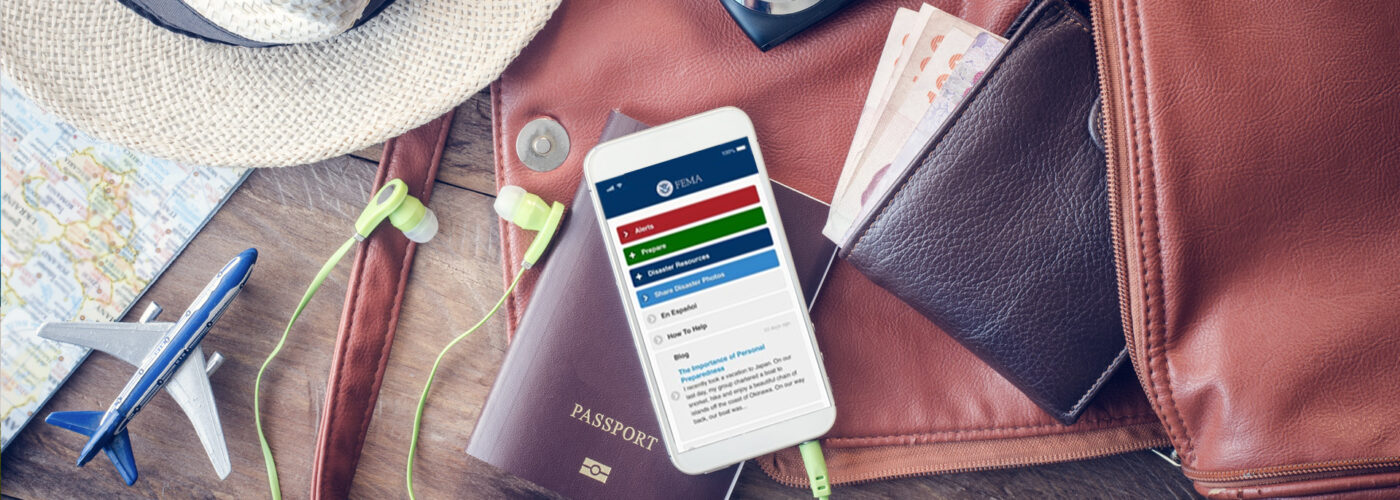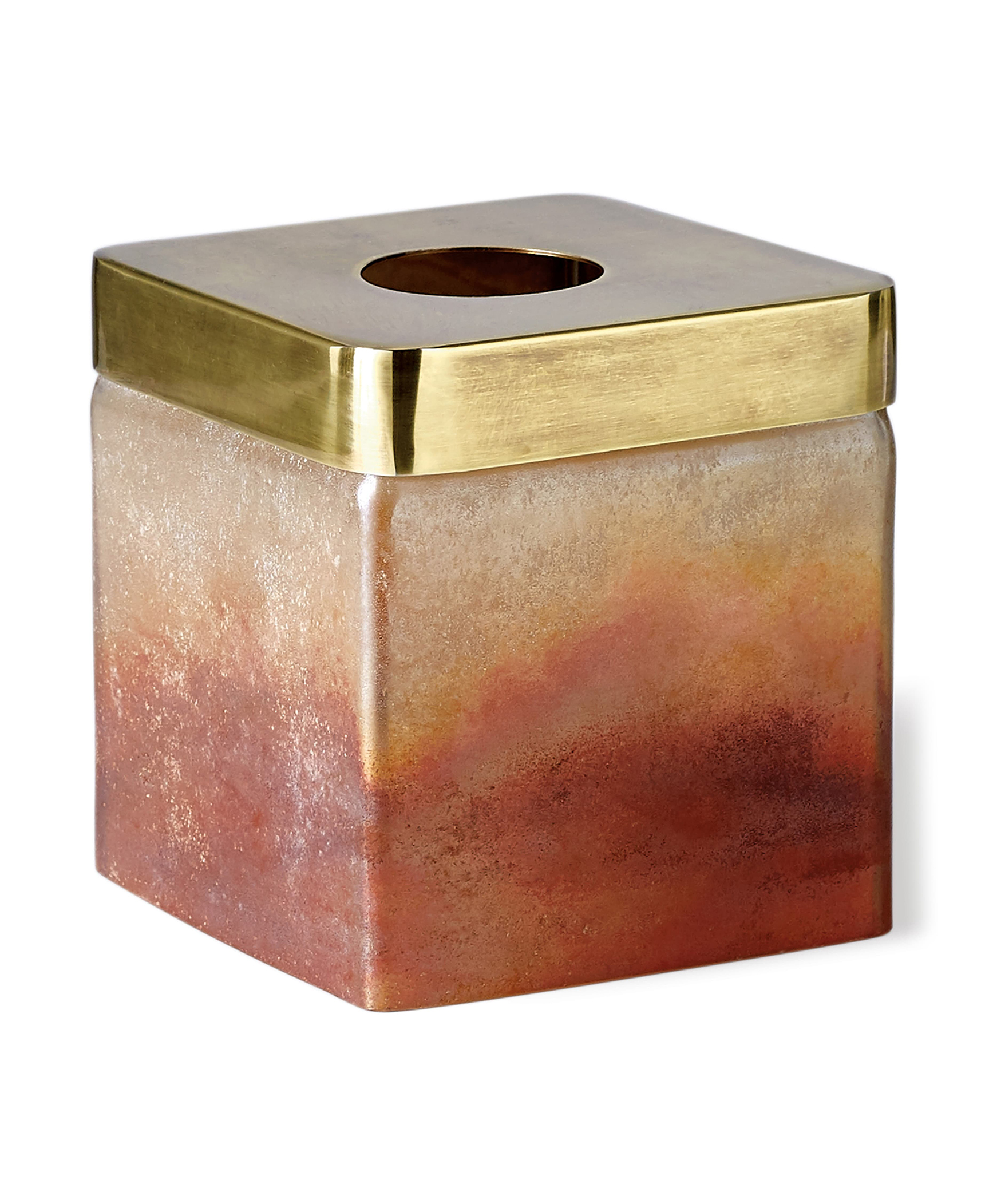Earthquakes. Fires. Tsunamis. Hurricanes. Most of us don’t think about these things as we’re packing, but when we visit destinations vulnerable to certain types of disasters, we take on the real risk of an emergency.
I live about 10 blocks from one of California’s major faults, so disaster preparedness is a small but important part of my family’s daily life. Until recently, however, I hadn’t much thought about how to translate the lessons I’ve learned from my local emergency-response community to the realm of travel. But then I realized that many of the most important items to have in the event of a major disaster are not only small and portable, but they have plenty of travel uses as well.
Here’s our shortlist of packable things that could save your life while on the road.
Whistle
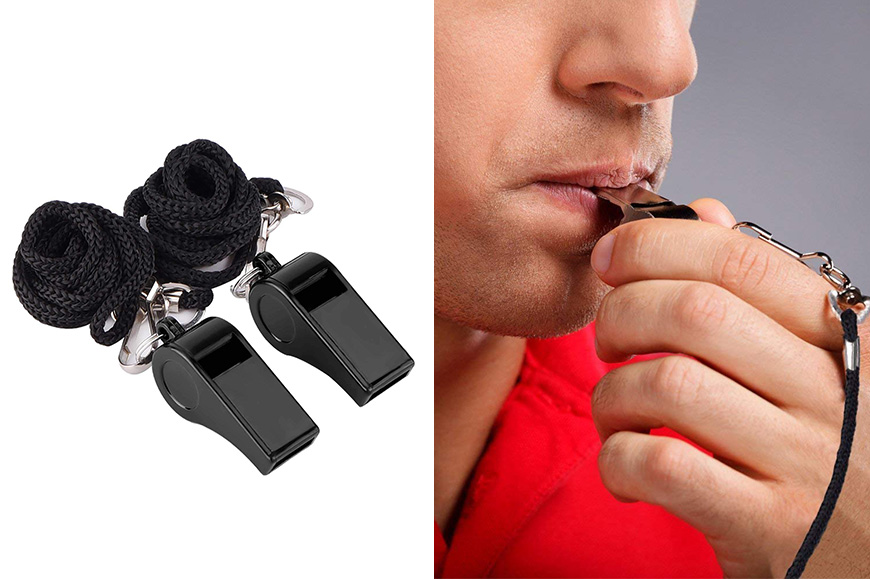
This is something that many people in earthquake-prone regions already have on their keychain. A whistle (opt for a “pealess” whistle, one that does not contain a cork pea, for maximum durability) can help rescuers find you if you’re trapped in a building or under rubble after a disaster. The high-pitched sound can be easier to detect than the human voice, and it can be indispensable when dehydration or crushing has impaired your ability to yell.
Other Travel Uses: Personal safety if you’re walking alone or at night, rallying a group or family, or kicking off an impromptu potato-sack race.
Flashlight

In a disaster, electricity is often the first thing to go. And if you’re in a building or on the subway, you may need a light source to help you find your way out. (While you could use your phone for this purpose, you’ll likely want to preserve its battery for other uses during an emergency.) Choose from the many small, keychain-sized LED flashlights with long battery lives and bright lights that are on the market.
Other Travel Uses: Finding your way back to camp after a midnight trip to the loo, reading in bed at a hotel without waking a sleeping partner, or navigating poorly lit paths and uneven surfaces.
First-Aid Kit

Staying as healthy as possible is key in the aftermath of a disaster, and that means effectively tending to minor injuries. First-aid kit basics such as individually wrapped alcohol pads, small packets of antibiotic ointment, and a selection of bandages can help you keep minor abrasions from becoming infected. Plus, they take up virtually no room in a bag.
Other Travel Uses: Caring for blisters, scratches, or bug bites or helping strangers in need of a quick fix.
Rescue Blanket
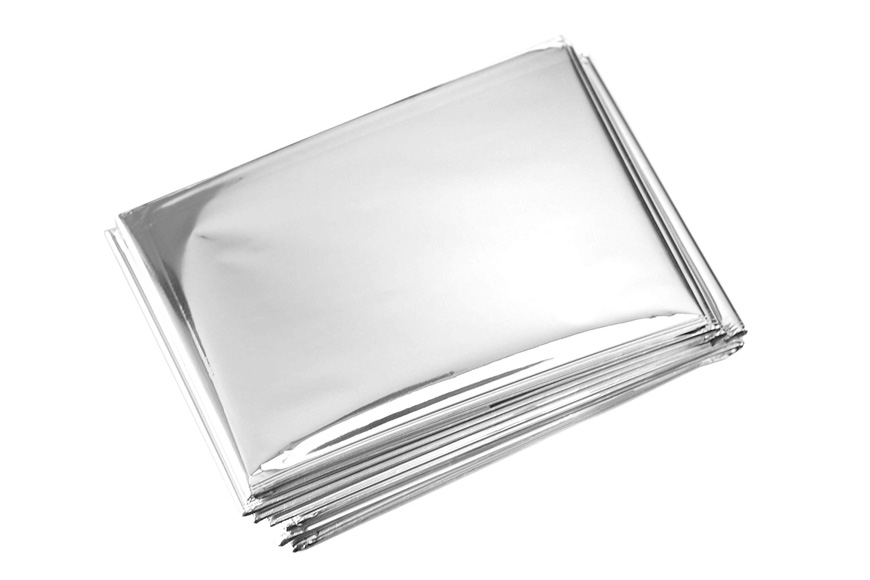
Staying warm can be a challenge if you find yourself exposed to the elements for an extended period. Even if you’re inside when disaster strikes, heating systems may not work. A Mylar rescue blanket is an incredibly light, stowable, and efficient way to stay warm with just your own body heat.
Other Travel Uses: A makeshift picnic blanket, a backup warmth layer for evenings under the stars or at the beach, or a hygienic floor cover for desperate moments when you need a place to rest during an overnight airport layover.
Neckerchief
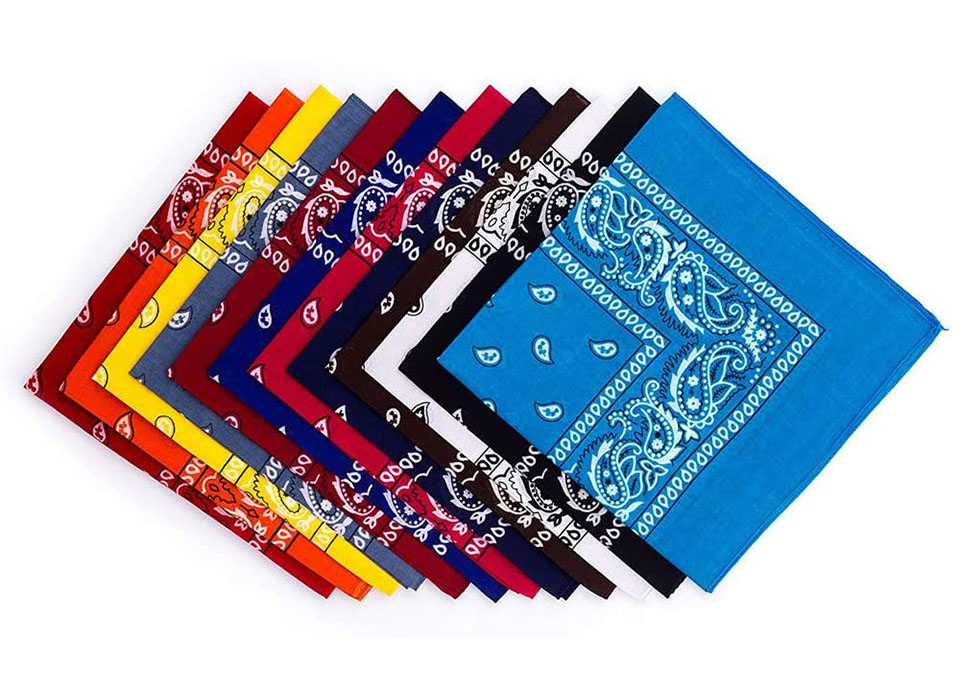
Dust from debris can cause short-term breathing problems and long-term health issues. While a simple bandana or neckerchief won’t filter out everything, it will provide coverage against larger airborne particles, and that can be just what you need to get to safety. Since basic bandanas are small and fold up nicely, you can carry a few to distribute to companions.
Other Travel Uses: Containing your cold on an airplane, when traveling you should opt for a medical-grade mask. Bandanas can also be used as dust-storm protection.
Back-up Charger
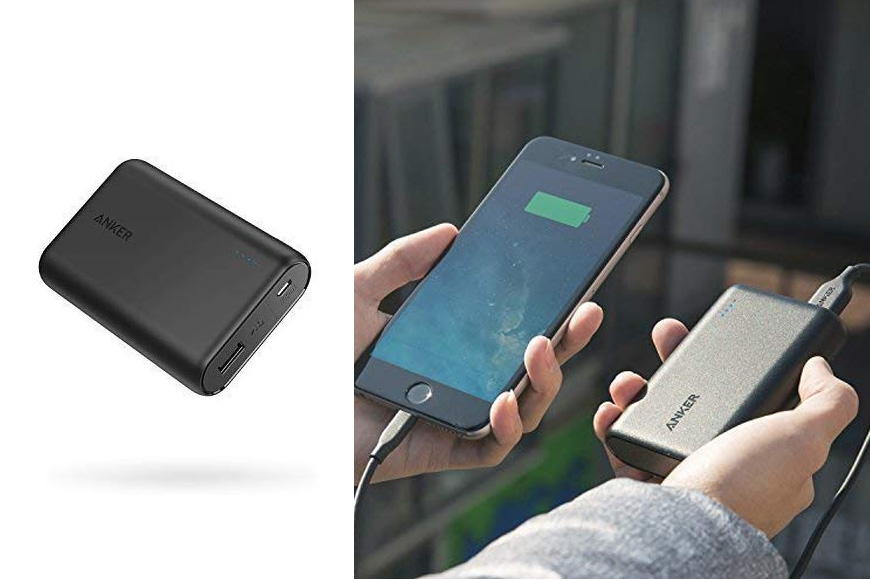
Charging your phone requires both electricity and access to an outlet—two conditions that can be hard to meet after a major disaster. Travel with a small battery- or solar-powered charger to prolong the life of your cell phone in an emergency. Even if phone and Wi-Fi systems are down, this will allow you to use your phone as a flashlight, for documentation, and to access apps designed to be helpful in emergencies.
Other Travel Uses: Helping you stay connected (via apps, maps, social media, email, and phone) whenever your phone battery runs low.
Water

Clean water is one of the most important things you can have with you after a disaster. To be prepared, buy a reusable water bottle and fill it every morning. To increase the chance you’ll actually carry it with you, choose a smaller size (for instance, Simple Modern’s 17-ounce bottle) that doesn’t take up much room in a day bag.
Other Travel Uses: Preventing dehydration while saving money and resources.
Food

After a disaster, food is often in short supply. Keep a spare high-protein snack in the bottom of your bag and you’ll be able to maintain energy longer. Nuts and health bars are easy, non-perishable options to have on hand while you travel.
Other Travel Uses: Avoiding blood-sugar spirals when you’re out and about.
More Ways to Stay Safe
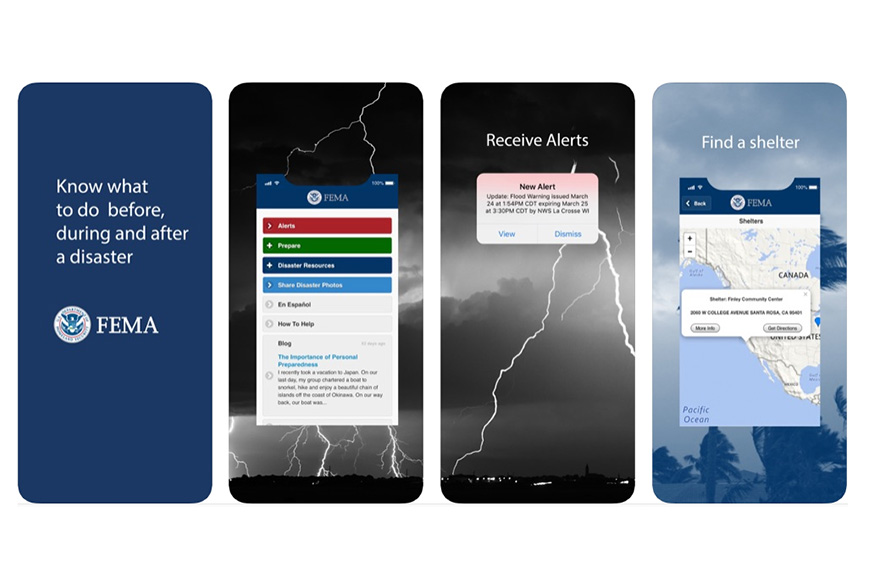
A large part of surviving a disaster is preparing in advance. Here are two more small steps you can take to keep yourself and your loved ones safe in the event of an emergency.
Know Possible Destination Risks: There’s no predicting every risk in a destination, but it’s a good idea to familiarize yourself with the potential vulnerabilities of a place before you arrive. FEMA has a free app (iOS | Android) with tips on how to prepare for and deal with disasters, including earthquakes, severe weather, terrorism, volcanoes, and wildfires.
Keep Your Shoes by the Bed: If disaster strikes while you’re in bed, you’ll want to have a pair of shoes close by to protect your feet from broken glass or other sharp objects that may have fallen on the floor. Before you go to sleep, place a pair of shoes (and socks) within arm’s reach of the bed. In earthquake-prone areas, some experts suggest tying the laces of your shoes together and securing them to a heavy piece of furniture so they’re less likely to slide away in the event of sharp movement.
More from SmarterTravel:
- 8 Travel Safety Tips You Probably Ignore (But Shouldn’t)
- 10 Cheap Travel Gadgets Under $20 That Are Surprisingly Useful
- 9 Travel Survival Skills We Hope You Never Need
Editor’s note: This story was originally published in 2014. It has been updated to reflect the most current information.
We hand-pick everything we recommend and select items through testing and reviews. Some products are sent to us free of charge with no incentive to offer a favorable review. We offer our unbiased opinions and do not accept compensation to review products. All items are in stock and prices are accurate at the time of publication. If you buy something through our links, we may earn a commission.
Related
Top Fares From
Today's Top Travel Deals
Brought to you by ShermansTravel
4-Night Grand Canyon & Las Vegas...
Great Value Vacations
 vacation
$772+
vacation
$772+
Greek Isles: Luxe Last-Minute, 7-Nt, All-Incl....
Regent Seven Seas Cruises
 cruise
$8599+
cruise
$8599+
Asia: Business Class Round-Trip Flights to...
Business-Class
 Airfare
$2249+
Airfare
$2249+
